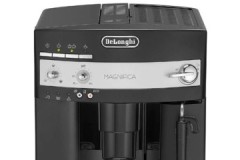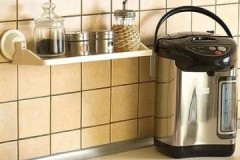Tips from experienced housewives on how to remove scale in a saucepan at home
 Scale may form in pans during use. The harder the water is used, the higher the risk of limescale deposits.
Scale may form in pans during use. The harder the water is used, the higher the risk of limescale deposits.
The difficulty in removing it is due to the fact that it cannot be removed during normal dishwashing. To do this, you can use homemade recipes and special household chemicals.
Read about how and what to remove scale in a saucepan at home in the article.
Content
How to wash the surface using folk methods?
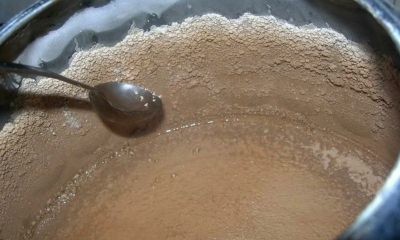 Limescale build-up is a natural process... Light bloom on the inside of pots and teapots is associated with the accumulation of sediment, which is formed as a result of heating hard water containing a large amount of various impurities.
Limescale build-up is a natural process... Light bloom on the inside of pots and teapots is associated with the accumulation of sediment, which is formed as a result of heating hard water containing a large amount of various impurities.
The trace elements that make up the liquid (potassium, magnesium, etc.) form the basis of this difficult-to-remove accumulation. In the process of heating water, chemical reactions begin to occur, giving carbon dioxide and solid sediment.
Lemon acid
Citric acid is a widely used descaling agent for dishes. If there is not too much sediment on the surface, then the treatment can be carried out locally.
If the result is unsatisfactory, then you can use another technique:
- Pour water into a saucepan so that all areas with scale are covered with it.
- Pour in a bag of citric acid.
- Bring the solution to a boil.
- Boil for another quarter of an hour.
- Turn off the stove.
- After the water has cooled down, wash the pan.
Vinegar
Table vinegar is a worthy alternative to special descaler. The effect of such cleaning is associated with a chemical reaction in which acetic acid interacts with precipitated calcium and magnesium salts.
Application procedure (based on the volume of dishes in 3-5 liters):
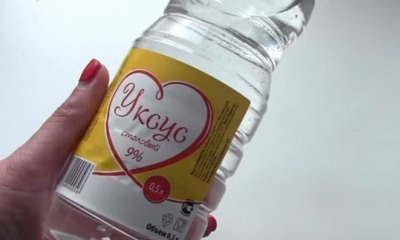 pour 1 cup of vinegar into an empty saucepan;
pour 1 cup of vinegar into an empty saucepan;- add water;
- boil;
- leave to boil for 5 minutes;
- switch off;
- set aside the pan until it cools completely;
- drain the solution;
- rinse the container.
The disadvantage of this method of descaling is the pungent specific smell of vinegar, which only intensifies when heated. The generated steam can be dangerous, so it is best to carry out all work with good ventilation.
Another vinegar-based method:
- Moisten the inside of the pot with plenty of undiluted vinegar using a napkin.
- Leave the container to stand for 2 hours.
- Rinse with a sponge.
This method can be ineffective with a thick layer of scale.
Soda
The baking soda creates an alkaline environment that effectively works against scale deposits.
Cleaning steps for a 5 liter pot:
- pour water into the container;
- add ½ a standard pack of soda;
- bring to a boil;
- leave to boil for at least 2 hours;
- remove from heat;
- cool to room temperature;
- rinse thoroughly.
Prolonged boiling will lead to the fact that the water will begin to evaporate, so in the process it will be necessary to top up.
Cucumber pickle
The acid in cucumber brine can be used as an effective descaling agent.
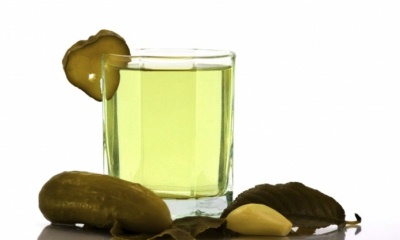 The cleaning process is very simple:
The cleaning process is very simple:
- Pour in brine so that all areas of scale are covered.
- Leave the pan in this form for about a day.
- Drain.
- Clean the inside using the hard side of a sponge and dish detergent.
- Rinse.
In a similar way, you can also use whey.
Vitamin C
For use as a descaler, ascorbic acid is ground into powder... Depending on the volume of the pan, prepare a solution based on the proportion: 1 tablespoon of powder for each liter of water.
Potato (apple) peel
The peel of apples or potatoes can also help to remove limescale and give the surface a shine. The effect is explained by a combination of high heating temperatures and substances present in potatoes and apples.
Procedure:
- the peel is placed in a container and filled with water;
- bring to a boil;
- boil for half an hour;
- rinse the inside of the pan in running water.
The more cleanses are used, the better the result.
Gas water (Sprite, Coca-Cola, etc.)
Carbonated drinks will also help in removing limescale from the surface of pots. It is removed by exposing the sediment to carbon dioxide and citric acid present in the drinks.
 Cleaning procedure from scale:
Cleaning procedure from scale:
- Pour sparkling water into a saucepan so that all limescale deposits are covered with liquid.
- Boil.
- Set aside for 8-10 hours.
- Drain.
- Rinse the dishes.
Top 3 special products
With insufficient effectiveness of folk remedies, purchased household chemicals designed to remove scale from dishes will come to the rescue.
Anti-scale
Special tool Antinakipin TM Cinderella (manufacturer of the Russian Federation) is designed to remove lime deposits from the inner surface of teapots and pots. An exception is enameled dishes, for which this product is not intended.
Application advantages:
- biodegradability;
- affordable cost;
- Ease of use;
- non-toxicity;
- efficiency.
Very simple usage:
- Pour cold or warm water into a saucepan.
- Dissolve the contents of the sachets, based on the proportion - 1 sachet for 4-5 liters of water.
- Stir.
- Leave to stand for 20 minutes.
- Rinse.
In addition to pots, Antiscale can be used in electric kettles, ordinary kettles, and irons. The price for a bag is less than 20 rubles.
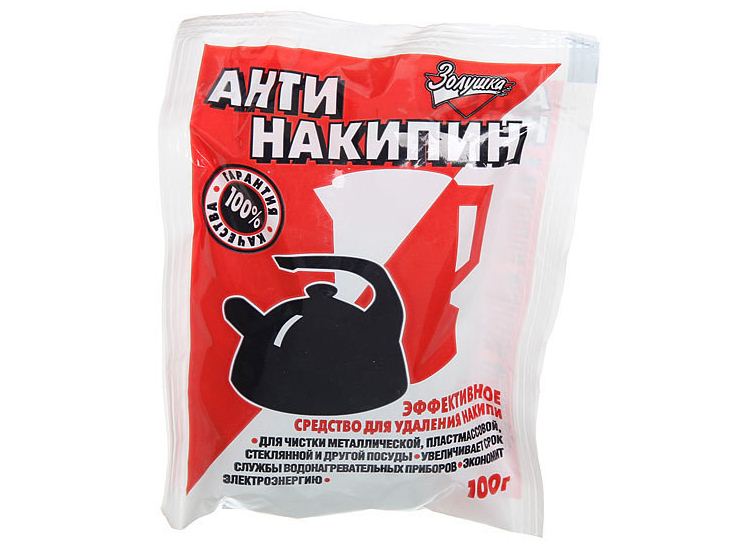
Chistin Anti-scale
The cleaning agent produced in the Russian Federation is available in small packages of 75 grams.Chistin can be used to descale kettles, pots, irons, boilers, etc. the preparation is even suitable for cleaning enamel dishes.
To prepare the solution, dilute the contents of the package in 1 liter of warm (about + 40 °) water and leave for half an hour... After that, the pots are washed with a sponge in running water. Chistin's cost is about 40 rubles per package.
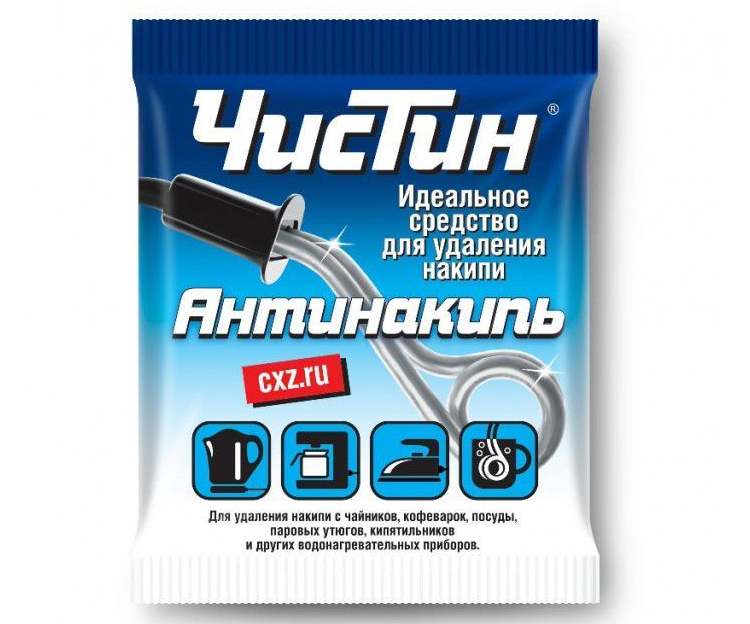
Romax boom
TM Romax Boom is available in 0.3 liter vials. The product is suitable for stainless steel and glass, but it cannot be used for cleaning enamelled containers.
Application:
- Prepare a solution based on the ratio - 0.5 l. water - 100 ml Anti-scale.
- Pour the solution into a saucepan.
- Leave to stand unheated for about half an hour.
- Drain the liquid.
- Rinse the pot with water.
The product is produced in Belarus. The bottle costs about 45 rubles.
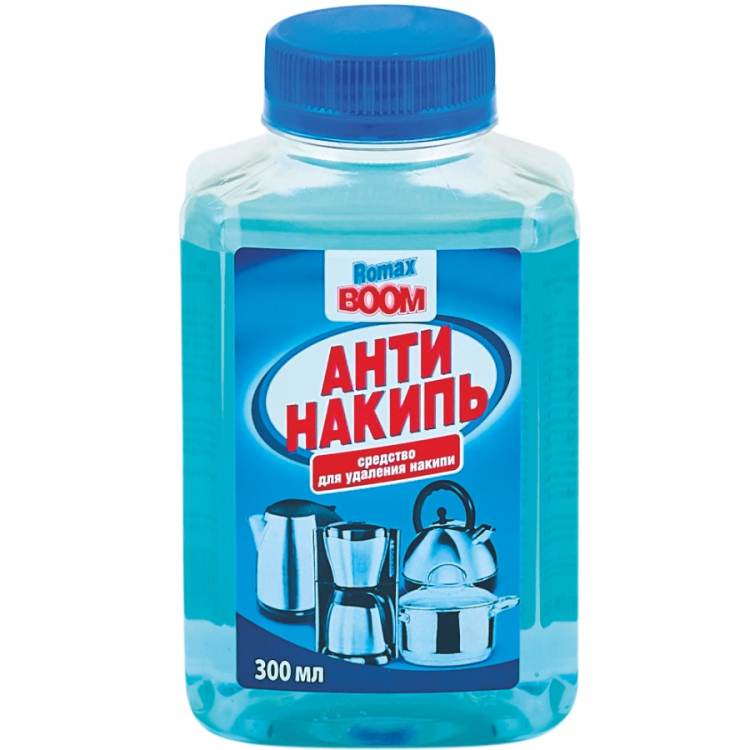
Cleaning features depending on the material
When cleaning pots from scale, be sure to take into account the material from which they are made. This circumstance cannot be ignored, since violation of the rules of care can lead to damage to kitchen utensils.
Aluminum cookware
Aluminum pots, when used regularly for boiling water of high hardness, quickly lose their appearance. This material oxidizes under the influence of food and water, darkens.
The peculiarity of the material imposes a number of restrictions on the cleaning of such pots. All "no" when removing plaque from aluminum dishes:
- use chlorine products;
- use abrasive products (steel wool, soda, etc.).
Preparations that are intended for dishwashers cannot be used for processing aluminum, since they are capable of reacting with this metal.
How to remove from enamel?
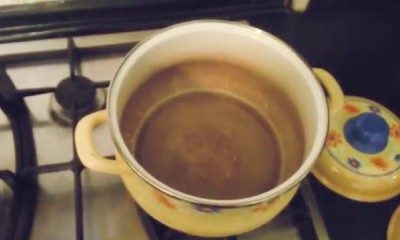 Convenient and beautiful dishes covered with enamel, when boiling water, also begins to grow overgrown with lime deposits... At the initial stage, the salts that form a precipitate have a loose consistency, but over time they become hard, deteriorating the appearance of the dishes.
Convenient and beautiful dishes covered with enamel, when boiling water, also begins to grow overgrown with lime deposits... At the initial stage, the salts that form a precipitate have a loose consistency, but over time they become hard, deteriorating the appearance of the dishes.
Many methods are suitable for cleaning, excluding aggressive mechanical action and concentrated acids.
Can be used:
- brine,
- peeling potatoes,
- soda.
Dishes with enamel defects on the inside should not be used for cooking.
Stainless steel
Stainless steel pans are durable, laconic, and last a very long time. It's enough to just take care of such things. But the problem with the formation of scale in relation to stainless steel is also relevant.
Prohibitions
In an effort to clean your pots from scale as efficiently and quickly as possible, you must remember a number of prohibitions during processing.
These include the following:
- Do not use chemicals to clean the inside of the pan that are not designed for cleaning the dishes. Such experiments can not only damage the material of the pan, but also harm health.
- Trying to speed up the process by using sharp and abrasive objects (sandpaper, knife, etc.) should also not be - the surface can be seriously damaged.
Preventive measures: how to prevent limescale build-up?
Preventive measures are advisable to reduce the potential for lime deposits to form on pots and other utensils.
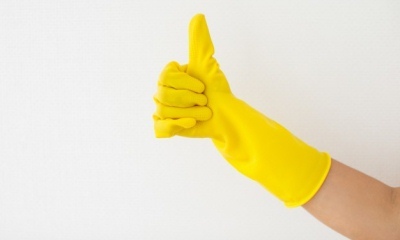 These include:
These include:
- Using softened water for cooking. This can be realized by installing a filtration system using purchased purified water.
- After each cooking, the dishes must be washed thoroughly. In this case, plaque on the walls and bottom will not accumulate.
Recommendations
Expert advice will help you effectively deal with lime deposits and keep this process under control:
- The intensity of sediment accumulation is directly related to the hardness of the water used.
- The sediment in the pan not only looks ugly, but also has a negative effect on health.
- Timely descaling allows the pan to heat up faster, as the physical qualities of lime insulate heat, lengthening the cooking process.
- Before starting to clean the pan, you need to make sure that the chosen method is safe to cover.
- After descaling using any of the methods (even based on food products, such as soda, vinegar, etc.), the surface must be thoroughly washed.
- Most products may not work with a thick layer of lime the first time. In this case, the procedure will have to be repeated several times.
He will tell you about how to clean various household appliances from scale this section.
Conclusion
The need to remove scale from dishes is associated not only with a visually inaccurate look, but also harmful to health. When cleaning pots, use only the products that are intended for this, and control the quality of cleaning, since even a slight sediment will enter the body along with cooked food and undermine health.



